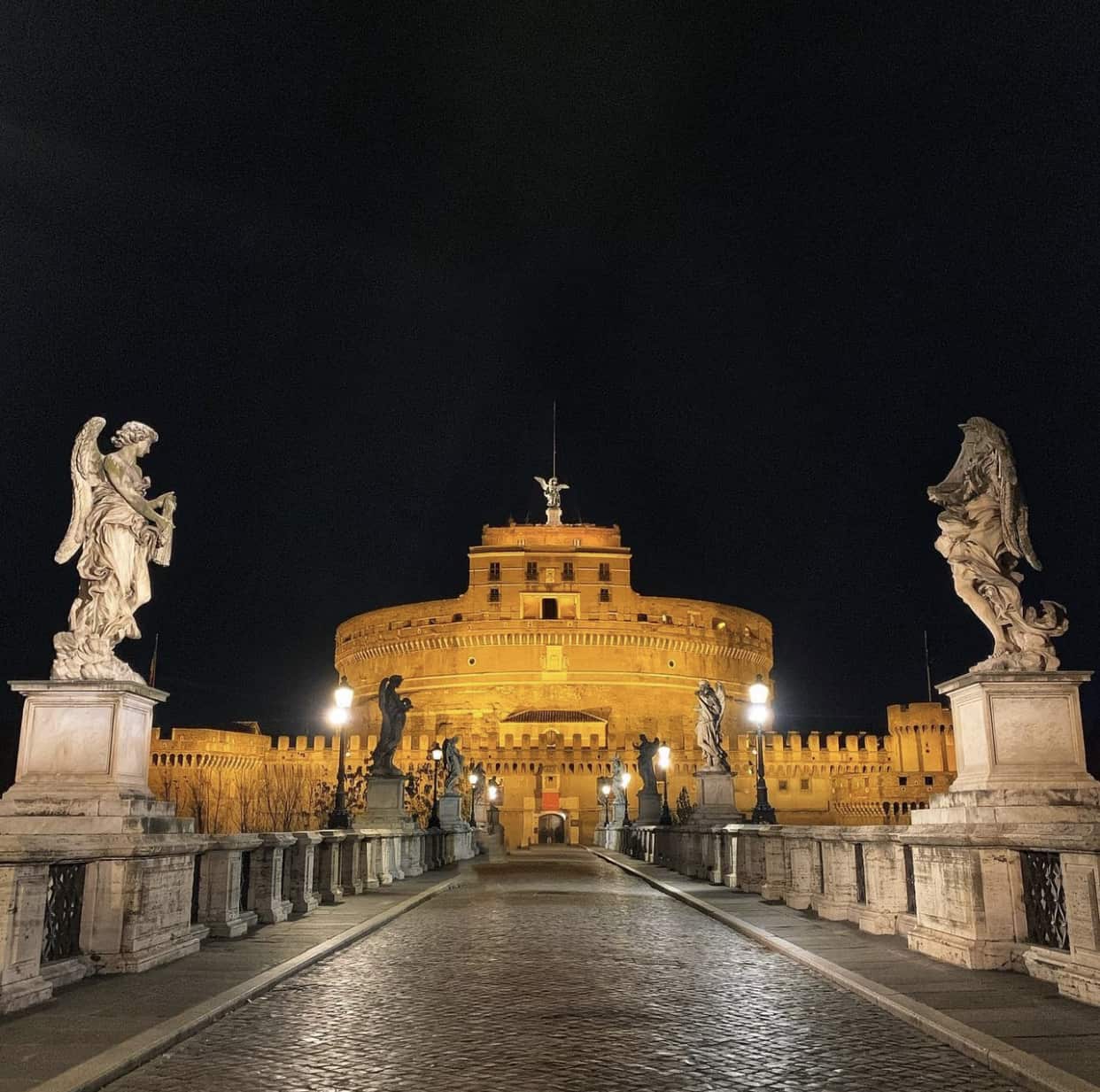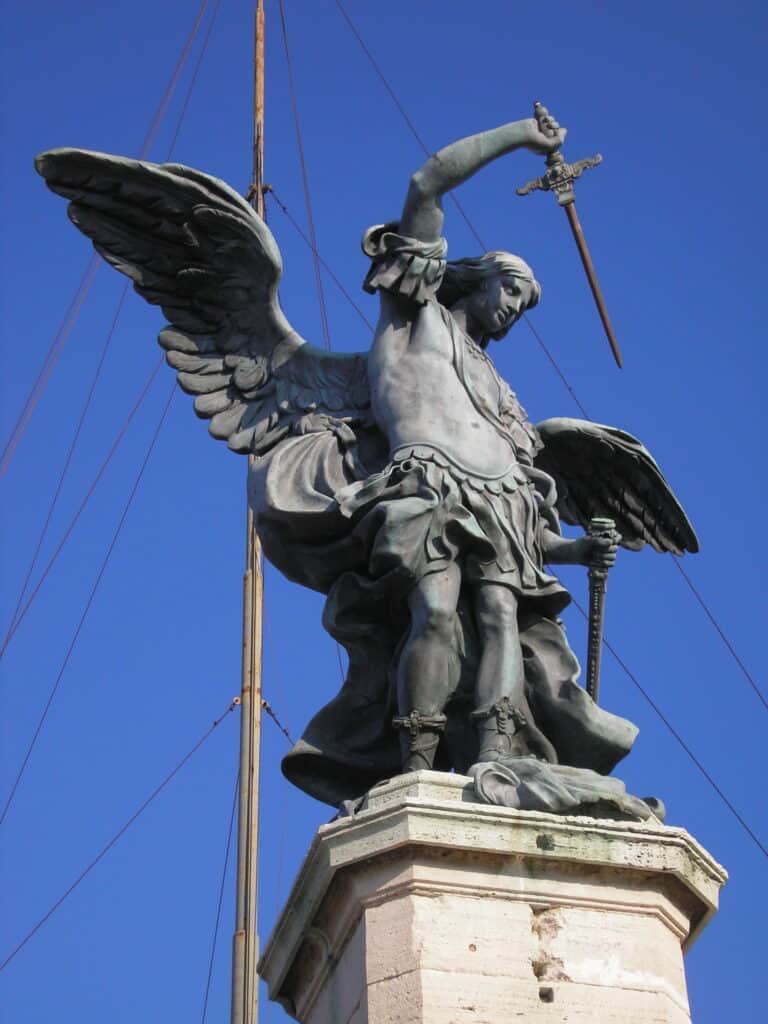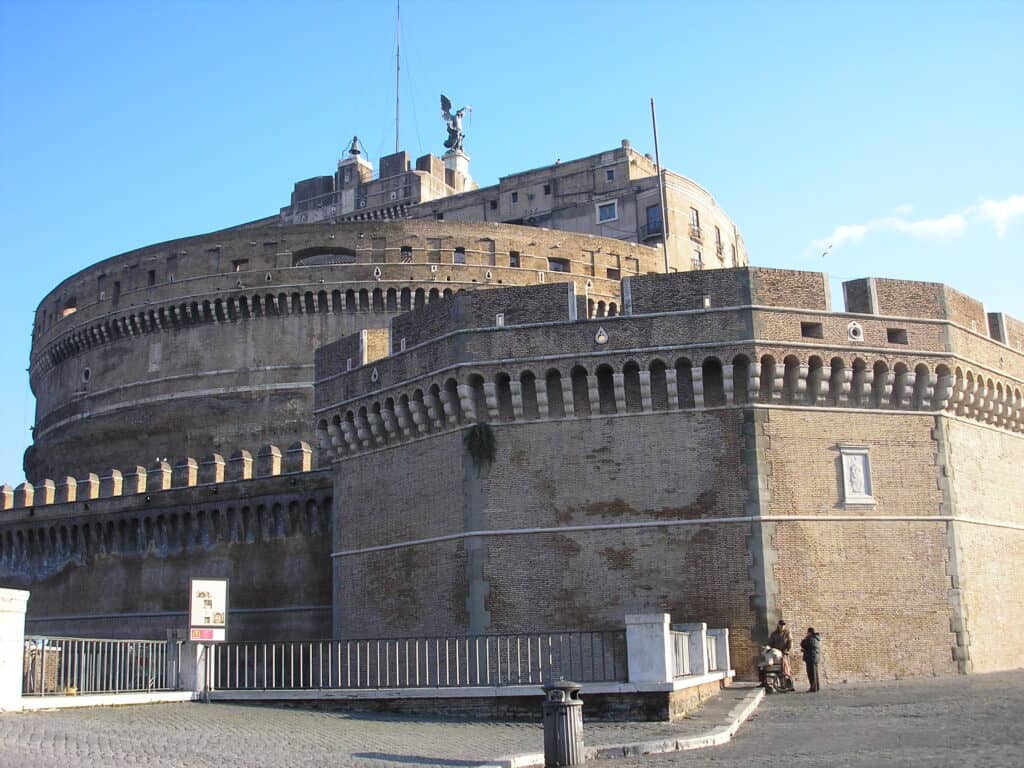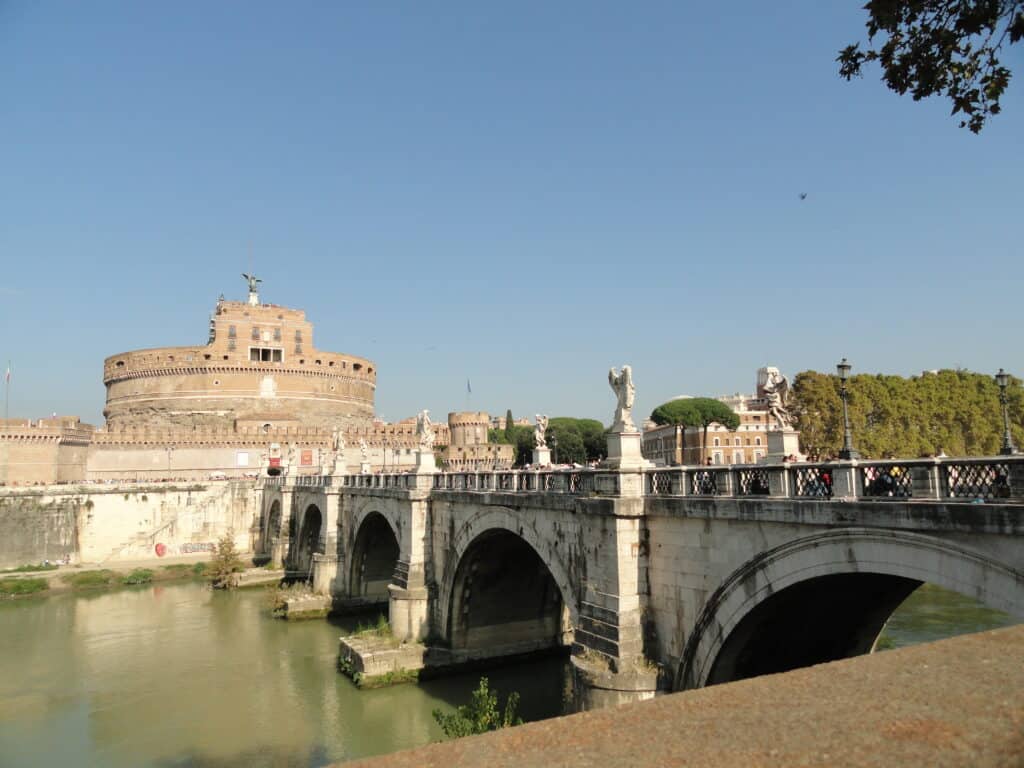
The works for the construction of what was originally the Mausoleum of Hadrian began around 130 AD and ended in 138, a year after his death.
The Emperor Hadrian did not choose the place bychance: the Roman Emperor wanted a quiet place for his burial, away from the confusion of the center and this choice distinguished him from the other Roman Emperors who used to be buried in the Campo Marzio area.
In the years of post-Roman chaos the legend of theapparition of the Archangel Michael on top of the Mausoleum of Hadrian was born. Legend has it that Pope Gregory the Great in 590, to stop the plague, made a procession near St. Peter’s Basilica. During the procession, the Archangel Michael appeared on the top of the Mausoleum and the epidemic ceased. In memory of this, in addition to changing the name of the site from Mausoleum to Castel Sant’Angelo, a chapel dedicated to the Angel was created, which no longer exists.
In 800 Charles Magne, Carolingian Emperor, after converting to the Christian religion he stablished his troops at Castel Sant’Angelo.
It was Pope Niccolò III who had the Passetto built around 1277, an elevated fortified corridor 800 meters long between the Vatican and Castel Sant’Angelo that allowed the Popes to take refuge there in complete safety and from 1367 the Castle became a papal residence incircumstances of danger.
Between 1667 and 1669 Pope Clement IX ordered the placement of ten marble angelsalong the Elio bridge which became Ponte Sant’Angelo. Castel Sant’Angelo has always been an important place of worship in Rome and served as a starting point for the design of the new St. Peter’s Basilica in the Middle Ages.
Today, after almost two thousand years, it is really difficult to recognize the architecturalfeatures of the Roman era in the Castle due to the continuous transformations itunderwent.
The Castel Sant’Angelo Museum, established in 1921, is one of the most visited museums in Italy.




